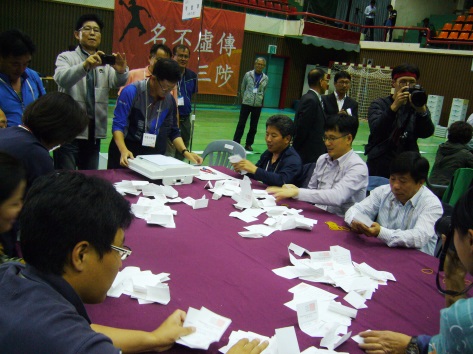A local referendum on a new nuclear power plant (NPP) construction project was conducted in Samcheok City, Gangwon Province, South Korea on October 9, 2014. Here I will discuss the significance of this referendum. Let me briefly look back on the developments up to this local referendum. In December 2010, Mr. Kim Dae-su, former Samcheok city mayor, applied for selection as a new NPP site, and in September, 2012, the national government officially designated Samcheok as the site for the next plant. Mr. Kim Yang-ho, present mayor of Samcheok, won the mayor’s post in the nationwide local elections on June 4, 2014 on an electoral platform of opposition to the new NPP construction plan and his intention to hold a local referendum on whether or not to allow the plan to go ahead. On August 26, the city assembly unanimously voted for implementation of the referendum. However, the Ministry of Trade, Industry and Energy announced its position that the referendum should be exempt from those defined under the referendum law because selection of a new NPP site is a “national duty”. This announcement thus deprived the Samcheok citizens of the legal ground for a binding referendum. The Samcheok citizens felt angry at this decision, but they did not give up. On September 12, the residents set up a referendum administration committee, officially announcing its establishment on September 15. This administration committee consisted of 15 members, which also included nuclear power supporters in order to secure fairness. It was financially managed with donations alone and its staff members were all volunteers. The management costs were therefore cut to about one fourth of that of an official referendum. All residents over 18 years of age were eligible to vote in the referendum. When I visited the referendum administration committee with seven other Japanese, the chairman said, “The Donghae city assembly issued a statement supporting this referendum on September 29, as did 18 municipal and county assemblies in Gangwon Province on September 30. Many civic groups across the nation have also declared their support.” He went on to say, “This visit by our Japanese friends in support of the referendum can be said to add legitimacy to the referendum.” On polling day, I was allowed to enter the polling station, which was set up in a gym. The ballot count was carried out amid a tense atmosphere, the committee chairman announcing the result at around 11 p.m. Of the 28,867 voters, 4,146 voted for construction of the NPP, and 24,531 against it. The committee chairman then declared that the local community had decided to oppose the construction of the new NPP in their city. The voter turnout rate was about 68%, and the opposition votes accounted for roughly 85% of the votes cast. This meant that the opposition group had won overwhelmingly, and cheers and applause erupted in the venue. A new page had been added to the history of South Korea’s departure from nuclear power generation. Despite this result, the government has yet to retract its plan to build the plant in Samcheok. A Samcheok resident said, “A nuclear phaseout is our identity.” By holding the referendum, they turned their belief into concrete action. Thus the referendum can be described as the practice of democracy and real autonomy by the citizens. Their action is exerting a great influence on the global nuclear phaseout movement.
Return to International Nuclear Cooperation page Return to NIT 164 contents |

| CNIC Citizens' Nuclear Information Center Akebonobashi Co-op 2F-B, 8-5 Sumiyoshi-cho, Shinjuku-ku, Tokyo, 162-0065, Japan TEL.03-3357-3800 FAX.03-3357-3801 Map http://cnic.jp/english/ |

